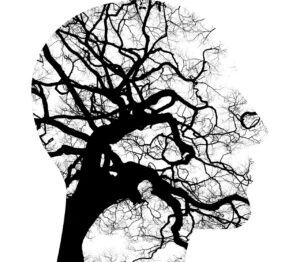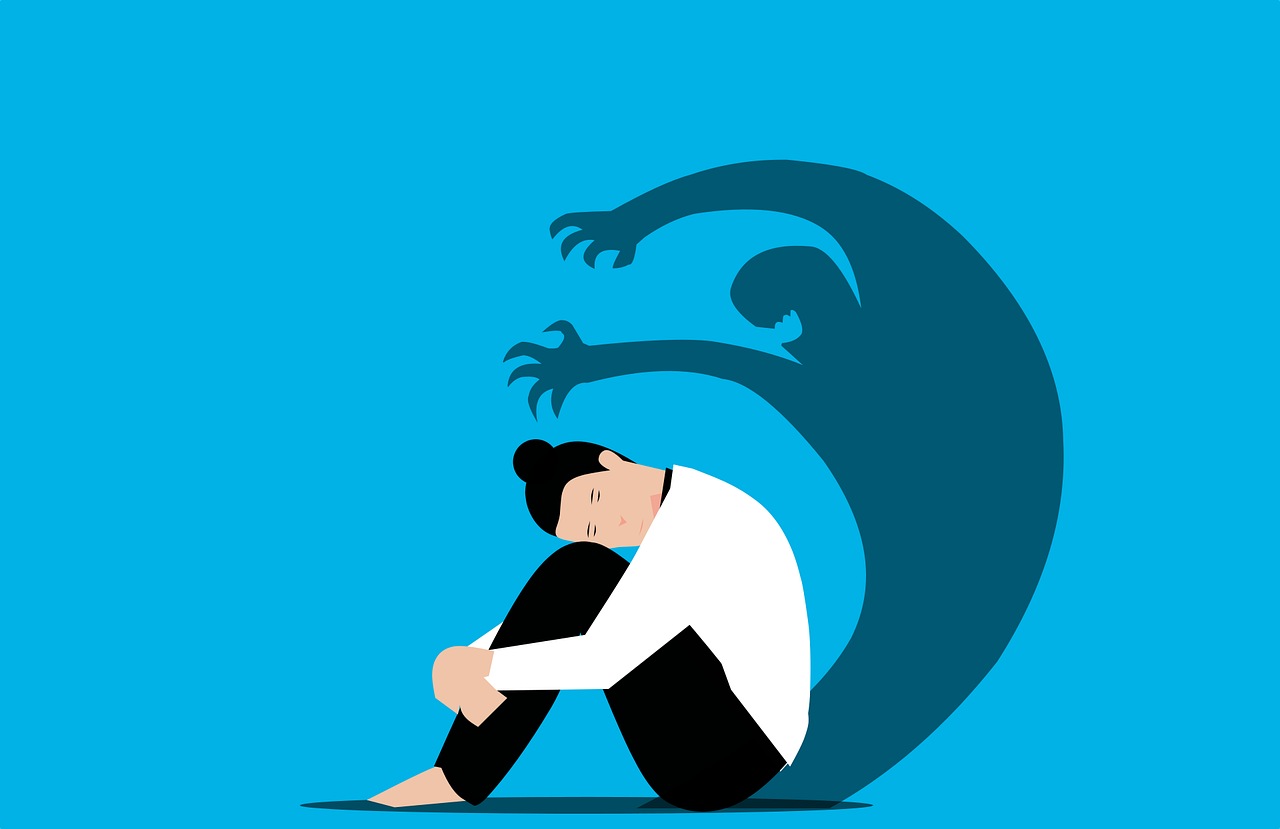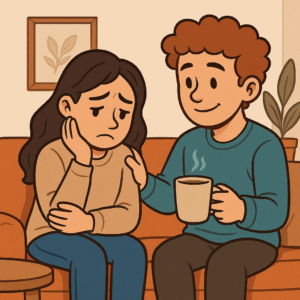What is OCD?
According to medlineplus.com, the definition of obsessive-compulsive disorder (OCD) is that it is an anxiety disorder in which people have unwanted and repeated thoughts, feelings, ideas, sensations (obsessions), and behaviors that drive them to do something over and over (compulsions).

Often the person carries out the behaviors to get rid of the obsessive thoughts. “It’s important to remember there are different types of OCD, and not everyone experiences it the same way,” says Dr. Sanam Hafeez, a neuropsychologist and faculty member at Columbia University.
Sometimes the behaviors are visible actions; others are mental. Common obsessions include concerns about contamination, cleanliness, aggressive impulses, or the need for symmetry. Common compulsions include checking, washing/cleaning, and arranging. There isn’t always a logical connection between obsessions and compulsions. Often, people with OCD experience a variety.
Many individuals with OCD recognize that their obsessions and compulsions are not rational. But they still feel an overwhelming need to perform these repetitive behaviors or mental compulsions. They may spend several hours every day focusing on their obsessions, performing seemingly senseless rituals. If left untreated, OCD can be chronic, interfering with a person’s daily routine, schoolwork, job, family, or social activities. Proper treatment can help sufferers regain control and feel relief.
In a study done by the University of Florida, researchers discovered that name-slinging could cause the symptoms of OCD to worsen. They also found that children with OCD are three times more likely to be subjected to bullying.
“One thing we have noticed working with many kids with OCD is that peer relations are extremely impaired,” said Eric Storch, Ph.D., a UF assistant professor of psychiatry and pediatrics and lead author of the study. “Kids target kids who are different.” As a result, kids with OCD sometimes exhibit behaviors that peers simply don’t understand.”
The bullying of children with OCD can be chronic. It never seems to stop. Chronic bullying happens about once per day on average. This includes everything from hitting, kicking, name-calling, and exclusion from social activities.
If a child with OCD also suffers from depression, they are far more likely to internalize any of the bullying taunts as possibly being true. They might have thoughts like “Maybe I am a loser” or “This could all be my fault.” Children can be brutal. They pick on anyone different. Anyone who is not like them. Any behaviors or actions that are different and make the child stick out make them an instant target for bullies. Any bullying caused by their OCD behaviors can also make the OCD just that much worse. Unfortunately, OCD has a lifetime prevalence of about two percent in the general population runs a chronic course, and is often associated with a significantly reduced quality of life.
According to sciencedaily.com, patients with OCD are “ten times more likely to commit suicide, contrary to what they previously thought.” In a new study from Karolinska Institute published in the journal Molecular Psychiatry, they also showed that the main predictor of suicide in OCD patients is a previous suicide attempt, which offers opportunities for prevention.
Studies show that a large majority of us occasionally have unwanted violent thoughts about hurting ourselves or other people. For example, we might briefly fantasize about harming the guy who just cut us off in traffic and then scared us and then slammed on his brakes to avoid other cars. Although we may not like to recognize this, about 85 percent of people experience some type of random violent or harmful thoughts. Luckily, they are just in passing and don’t disturb our ordinary lives.
For people who have obsessive-compulsive disorder, having unwanted violent thoughts may not be dismissed so easily. They may have these thoughts often enough to become intrusive, taking over the person’s life. When this happens, the individual is dealing with Harm OCD.
According to the Center for the Treatment of Anxiety and Mood Disorders website, Harm OCD is a subset of classic obsessive-compulsive disorder (OCD). The condition is characterized by “having aggressive and intrusive thoughts of harming someone and the responses the person uses to cope with these thoughts.”
OCD makes individuals feel they can’t trust their thoughts and mind. Although someone without OCD could have a violent thought and recognize that it is simply a thought, a person with it who has the Harm OCD subset may worry that just having the thought could somehow be meaningful. So they want complete assurance that they won’t act on the idea.
These intrusive thoughts lead to more frequent compulsions and rituals to decrease the discomfort about the idea. Once they complete their ritual, they feel less anxious; but the intrusive thought may come again, setting up endless cycles of doubt and fear.
The Center for Treatment of Anxiety and Mood Disorders’ website lists the following potential symptoms. Those who suffer from Harm OCD may:
- Have aggressive thoughts or see images in their minds of violence and worry that this means they will carry them out.
- Fixate on the idea that they could inadvertently cause harm and not realize it (for example, they may worry about running someone over by accident and leave the scene because they were unaware of what they had done).
- Be terrified that they will hurt someone (or themselves) on impulse—whether intentionally.
- Worry they are hiding their true nature from themselves and others and that they are a vicious, aggressive person who will act out someday because they will lose control.
In response to their intrusive thoughts, people who experience Harm OCD engage in compulsions and rituals to help relieve their anxiety. These may include such actions as:
- Hiding dangerous objects (kitchen knives, poisonous chemicals, medications, ropes, razor blades) so they are not tempted to use them to hurt someone.
- Reviewing their every action to see if they could have, or did, cause Harm
- Avoid watching the news or such things as violent movies, television shows, or videos to keep from triggering violent ideas.
- Spending excessive time online researching violent crimes and ideology to know whether they have things in common with the offenders.
- Compulsive praying or carrying and using spiritual items so that they won’t lose control.
- Asking others if they think the person with Harm OCD could hurt others.
- They may also endlessly question themselves to answer, once and for all, if they can injure anyone (including themselves).
OCD can present with a wide variety of symptoms. Certain groups of symptoms usually occur together. We sometimes view these groups as dimensions or clusters that may reflect an underlying process. The standard assessment tool for OCD, the Yale-Brown Obsessive-Compulsive Scale (Y-BOCS), has 13 pre-defined categories of symptoms. These symptoms fit into three to five groupings. A meta-analytic review of symptom structures found a four-factor system (collection) to be most reliable. The experimental groups included a “symmetry factor,” a “forbidden thoughts factor,” a “cleaning factor,” and a “hoarding factor.”
The “symmetry factor” correlated highly with obsessions related to ordering, counting, and symmetry, as well as repeating compulsions. The “forbidden thoughts factor” is connected with intrusive and distressing thoughts of a violent, religious, or sexual nature. The “cleaning factor” correlated highly with obsessions about contamination and compulsions related to cleaning. The “hoarding factor” only involved hoarding-related obsessions and compulsions and was identified as being distinct from other symptom groupings. OCD can also be co-morbid with other medical conditions such as Tourette’s syndrome, ADD/ADHD, or both.

How to Treat OCD
 Treating a child with medications might help with the symptoms in the short run. But doctors need to evaluate the whole child to understand better what their patient is enduring. The child’s doctor needs to assess the child for signs of anxiety, depression, and loneliness. Not doing so can leave the child at risk for these issues to continue if the child is treated for OCD, but not for these co-morbid conditions. These additional issues might very well continue. They are leaving the child only marginally better off than before.
Treating a child with medications might help with the symptoms in the short run. But doctors need to evaluate the whole child to understand better what their patient is enduring. The child’s doctor needs to assess the child for signs of anxiety, depression, and loneliness. Not doing so can leave the child at risk for these issues to continue if the child is treated for OCD, but not for these co-morbid conditions. These additional issues might very well continue. They are leaving the child only marginally better off than before.
According to https://www.verywellmind.com/, aerobic exercise can be used therapeutically to improve mild-to-moderate symptoms of depression, and reduce overall stress and anxiety. For example, one study examining aerobic exercise and OCD symptoms asked participants to continue their usual treatment, adding moderate-intensity aerobic exercise, such as running, to their treatment regimen for 12 weeks.
What they found was that the severity and frequency of OCD symptoms were reduced immediately following the exercise. In addition, the overall severity and frequency of OCD symptoms decreased over the 12 weeks of activity. However, for some participants, these gains were still present six months later. Exercise can also help improve your self-esteem. If you exercise regularly, you may find yourself feeling better both physically and mentally. These changes can help boost your self-confidence and decrease your stress—a significant trigger of OCD symptoms.
Realistically, it is an incredibly disabling illness that some people are born with, and some people develop it at a young age. The causes of Obsessive-Compulsive disorder are many. They can include all the following, as listed on the website for Better Health Channel:
1) Compulsions are learned behaviors, which become repetitive and chronic when they are associated with relief from anxiety.
2) It’s because of genetics and hereditary factors.
3) It can be chemical, structural, and functional abnormalities in the brain.
Factors that may increase the risk of developing or triggering obsessive-compulsive disorder include:
1) Family history. Having parents or other family members with the disorder can increase your risk of developing OCD.
2) Stressful life events.
3) Other mental health disorders.
The bottom line is that it is a highly intrusive anxiety disorder. The bullying of someone with OCD happens all too frequently in school. The incidents are usually short, but this causes a real problem for the OCD sufferer because it rarely occurs in front of any teacher, staff, or adult personnel. This can lead the sufferer to feel like no one cares. Unfortunately, some school personnel can be part of the problem when they see it happen and take no action to stop it. Only 25% of teachers and school personnel recognize the signs of bullying when they see it. This increases the feeling of isolation. Suppose your school does not have an anti-bullying program. Then you might consider starting one with the school’s help.
Sadly, students with OCD can also have abysmal self-esteem. But they are usually quite knowledgeable. This can also cause a top level of frustration because they know they can accomplish things that other children cannot. But then, not being able to show what they are capable of can cause an outrageous sense of frustration. They may have talents that no one else knows about, which we should encourage them to develop. It can also help other students learn how to appreciate the OCD sufferer even more. Any praise they receive for their ability in many areas will most definitely help increase the student’s self-esteem and self-confidence. These are NOT the same, although some people try to use them interchangeably. Everyone, regardless of their age or gender, needs both.
Physical education can also be a severe problem for the sufferer, particularly if they are touched or about contamination. This could be partially overcome by assigning them duties, like helping the coach. But exercise can also help improve self-esteem.
Social skills can be a tough challenge for the sufferer, mainly if they are comorbid with another illness such as Tourette’s or ADHD. Unfortunately, I was born with all three. My violent alcoholic father made it even worse from the many traumas that I endured. As a result, I apparently developed PTSD before I was even 16, even though I had not been diagnosed. The sufferer needs all the help they can get with developing social skills. The coordination of his support team must include educators, school administrators, staff, and parents. The entire team needs to understand that the behaviors associated with OCD cannot be controlled. However, through medication, counseling, teacher engagement, and parent involvement, it can be managed successfully.
The unwanted thoughts can be downright terrifying. I have had thoughts of stabbing people or harming them for more years than I can remember. Of course, I have not acted upon any of these thoughts. But they are terrifying. You will do almost anything to alleviate them. At times, I have refused to even pick up a knife. This can make cooking for me extremely difficult. I have had thoughts of pushing someone down the stairs in front of me. This has made me take a different route more times than I can even remember. This is the first time that I have made these thoughts public. It is just too frightening to think about how other people would react to them. These thoughts can produce a level of mental anxiety that is almost paralyzing.
The bottom line is that the OCD sufferer is dealing with issues that most people will hopefully never have to endure. So please, try to have a little extra patience and understanding. They are just as normal as the rest of us in the respect that they also have feelings, desires, wants, likes dislikes, and needs like everyone else. In addition, you might find out that you have an extremely loyal and intelligent friend.